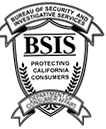Security is a constant concern for every business unit. Any lapse in security impacts the store’s profits. These lapses, according to the National Retail Federation, account for a retail shrinkage of $100 billion. Loss prevention thus becomes a necessary conversation.
By increasing your security, you can significantly reduce your store's losses due to security lapses. Below are some approaches you can adopt to address vulnerable areas in the store’s security policies and systems.
a) Assess the Security Measures in Place and Familiarize Yourself With Potential Security Threats
Increasing your store’s security starts with assessing the current security system. The review should highlight the security system’s strong points, focusing on improving the vulnerable areas. Thus, you can know which areas to address to tighten your security.
Retail stores face two threats: physical and digital threats.
Physical Threats
Physical threats include breaches and theft cases during and outside operating hours.
It is crucial to ascertain the physical security measures to deter outsiders from accessing the store when it is closed. Doing so is especially useful if your store’s location is in an area prone to break-ins or if there has been a recent increase in reported burglary cases.
Further, you need to physically assess the store areas prone to shoplifting and internal theft. First, determine which products are susceptible to theft. Then probe whether the identified products are stolen off the shelves or whether your employees take the products from the store.
After the assessment, address the security breaches by revamping your stock-taking policies and employing additional accountability measures when staff handles inventory. As for products susceptible to shoplifting or burglaries, consider shifting them from hard-to-see areas to easily viewable shelves. Alternatively, installing additional cameras or insisting on staff patrolling are some of the solutions you can consider.
Digital Threats
Digital threats are often overlooked and result in significant losses if undetected for an extended period. These threats occur through cyber break-ins, namely website hacking, card skimming, customer data breaches, and secret taps in your network.
Ensure that your store’s security hardware and software are compliant. Additionally, the systems should meet the latest security standards, especially for the equipment handling payments and customer data.
Pay particular attention to your websites. Hackers target websites primarily because of the recent surge in ecommerce. Websites handle significant traffic and hold important customer and payment data. Invest in PCI-compliant PCI-compliant payment processing systems. Additionally, insist on EMV (Europay, Mastercard, and Visa) or chip payments.
As for the customer data on websites, a good rule of thumb is to delete data you do not use. For information valuable to the business, invest in the latest data security software that detects, contains, prevents, and eliminates hackers' attempts to access the data.
b) Hire the Right Staff
Your security investments are only effective with the right employees. The right hires refrain from sabotaging your efforts but enforce your retail security policies.
Staff members impact the business’ security concerns directly and indirectly. Some employees sabotage or exploit security gaps to make away with store products. In other situations, an employee’s struggles, like alcohol or substance abuse, risk causing losses, for example, driving under the influence of alcohol or drugs or being unable to work because of being high.
Conducting a background check helps. The screening details the employee's criminal history and informs your choice. For example, you will not hire an individual who has been arrested and served time for credit card fraud.
The information is not only helpful in rejecting applicants. You can also use it to determine what roles to assign the new hire. For example, an individual who struggles with alcohol and substance abuse is not an ideal fit for a security control room operator. The post requires alertness, which the employee could lack should he/she relapse.
Background checks also establish the employee’s residence and past employment. This information helps formulate an employee’s profile.
c) Invest in Adequate Training for Your Employees and Communication Strategies
Security strategies and policies should incorporate safety and compliance issues. Your employee should be acquainted with the store’s security policies. You should document and distribute the security procedures and guidelines when hiring, updating, or changing your policies: Put simply, you should communicate your policies effectively.
A store’s security system is effective if the employee’s regular training is relevant, understandable, and relatable. Proper training builds on the store’s success. Further, this approach also reinforces the store’s lasting safety and security culture.
Here are a few suggestions you can use to communicate your safety and security strategies and policies effectively.
Post Guidelines At Key Areas Around Your Store
Reminders are an effective way to communicate store policies. Print out the policies and post them at target locations where your staff frequent or at their workstations, for example, the changing rooms, the area behind the counter, and the stockroom. This approach helps the printed-out security measures remain in everyone’s mind, which helps implement them.
Demonstration Accompanying Verbal Communication
The fastest and easiest way to communicate the store’s procedures is by incorporating verbal communication with demonstrations. Information retention is highest when demonstration accompanies oral information.
You can regularly have the experienced staff demonstrate to their team some of the procedures and what is expected of them. For example, one of the policies could be how to handle unusually large fraudulent credit card purchases. The experienced team member could demonstrate to the other employees what signs to look out for in antsy customers and with multiple credit cards. In most cases, these individuals aim to make purchases with stolen or fraudulent credit cards.
Bring in Professionals
You can occasionally bring in professionals to assist your internal compliance team and train your staff on loss prevention and retail security. Professionals make it their business to stay updated with the security challenges in the retail space, the latest technology and techniques to address the security concerns, and the security challenges retail owners and managers should be aware of.
Professional training goes a long way toward reinforcing the security policies you adopt.
d) Invest in the Right Security Equipment
Human input has a limit. Even with an adequately trained team, there is a need to bolster the team’s input with the right tools. The loss prevention solutions worth considering include the following:
Security Cameras
Security cameras are advantageous since you can monitor your store in real-time or review footage when needed. They serve as a deterrent against criminal or inappropriate behavior. Should incidents occur, the video footage protects you and your employees from liability. You can only access these benefits with the right camera placed in highly-trafficked or critical areas.
When choosing the right CCTV system, take note of the following features.
- Video resolution — Go for a camera with a video resolution of at least 1080p. You can quickly identify an individual’s facial features, actions, and clothing thanks to high-resolution cameras' video clarity.
- Field of view — Cameras with a field of view of at least 130 degrees offer a wider visual field. Thus, you do not need extra cameras to capture an area one camera can cover.
- Frame rate — Frame rate refers to the frequency the camera displays consecutive images. Cameras with a frame rate of at least 15 fps (frames per second) offer decent video resolution.
- Night vision — Insist on cameras that record footage in darkness. Any activity at night outside your store helps formulate your security approach.
- Storage — Invest in cameras that store video footage for a long time. You can buy cameras with a local storage capacity of at least 32GB. This capacity helps retain at least a week’s-worth of surveillance footage. Alternatively, you can go for CCTV systems with cloud storage. They retain recordings for periods longer than one week.
- Additional features — Some cameras are fitted with motion detection features that notify you when a person, car, animal, or other objects are detected. Further, some systems come with a mobile application that allows convenient access to your store’s surveillance.
Scanners and Barcode Labels
Scanners and barcode systems are an asset in inventory management. You can easily track products shipped to your store and those bought by customers. Therefore, knowing what product is in stock and the quantity available is easily identifiable in real time.
Using scanners and barcode labels also ensures that the products are correctly captured and accounted for.
RFID or Security Tags
Radio Frequency Identification (RFID) tags are tracking systems utilizing intelligent barcodes to identify items. Though more expensive than security tags, this technology is better for inventory management.
Security tags are an option if you are on a budget. However, you should install sensors at your store to detect active tags.
Additionally, RFIDs are also used in keycards. Keycards restrict access to specific areas to authorized personnel. Further, the keycards are useful since you can trace who accessed specific areas of the store at what time since the system registers the staff member’s name and the time the keycard was used.
Burglar Alarms
The right burglary system prevents burglary attempts, offers added security should an attempt succeed, and sends a distress signal to the authorities for action.
As a deterrent, a burglary system could come with safety lock features. For example, you can only access the premises if you are buzzed in. Other systems let you access the premises and lock you in. You can only go out of the store if you are buzzed out. This feature prevents easy access to thieves since they require the staff member to grant them access to the facility.
Some systems will also have keypad security as an added feature. Anyone accessing the store can only gain entry to the premises if they input the security code on the security keypad. Alternatively, the individual could access the store but should key in the access code if the keypad is located inside the store. Failure to which the alarm goes off and alerts the security personnel and authorities of a possible break-in.
Additionally, the alarm systems come equipped with a distress call feature. A staff member needs only to press the panic button, and an alarm is sent out for the police officers or other security personnel to respond. Most of these are silent alarms. Once activated, the distress call is sent out without alerting the offender.
Troubleshoot Your Systems Regularly
Troubleshooting the existing system to identify its vulnerabilities is part of ensuring you have the right tools. This exercise is especially useful in payment processing, staff management, and POS systems.
Troubleshooting exercises are helpful for the following:
- Pinpointing data breaches.
- Risk monitoring.
- Identifying existing permissions — System access is based on an employee’s role. You will, therefore, ascertain whether the access matches an employee’s position and whether the access to the system reflects any employee changes made, for example, ensuring that employees relieved of their duties do not have access to the system.
e) Conducting Loss Prevention Audits
Loss prevention (LP) audits objectively assess the store’s operating procedures and internal controls. The audits aim at evaluating the effectiveness of the store’s policies and their impact on the overall profitability and management of the store.
Each store has an LP tailored to address its specific concerns. Tailor your LP checklist and have your manager check the degree of compliance with the store’s security policies. Common points that should be on the audit checklist include the following:
- The keys to the Point of Sale (POS) machines are secured in the designated location.
- The security system, hardware, and software operate as required.
- Access to particular areas in the store is only granted to personnel, for example, the stockroom.
- All items have an RFID or security tag. Further, the barcode scanners and readers are fully functioning.
- The store’s policies are adequately distributed on the premise and are readable.
- Only authorized staff members can handle high-risk tasks and transactions on the POS.
- Every team member understands the store’s policies on voiding transactions, issuing refunds, and customer interactions.
f) Having an Appropriate Disciplinary Approach
When all the security measures are in place, and your staff fails to adhere to the policies, it is crucial to take appropriate disciplinary actions.
Disciplining can vary depending on the degree of non-compliance. Most acts of misconduct are errors in judgment or carelessness. These require simple actions ranging from a warning to docking the worker’s pay to compensate for the loss. Grave offenses like participating in a robbery attempt or planning a robbery could require legal action over and above firing the offender.
The discipline approach aims to inform your staff members of possible consequences for their negligence because they bear responsibility for the losses.
g) Hiring Professional Security Personnel
Store security extends beyond manning entry points and deterring or dealing with robbery attempts. Hiring a professional team gives you access to professional protection services, internal control services, and emergency response services in one package.
Store owners who have hired professional security teams can tap into the expertise of individuals who operate within the security industry, for example, off-duty police officers. Hiring these individuals is also a financial benefit since the new hire is an outsourced asset and does not come with the costs associated with new hires. Some costs include welfare costs, training costs, fringe benefits, bonuses, and purchase expenses for security tools like guns. All these expenses are covered by the company you outsourced the security function to, which is the security personnel’s employer.
h) Change the Store’s Layout
A store plan could either maximize security or increase the potential for theft owing to its numerous blind spots. It is necessary to utilize the floor space efficiently to maximize returns. However, you also must consider security as part of a store’s efficiency.
There are two approaches to a store’s plan.
Should you decide to retain the floor plan with the blind spots, you will incur the added cost of installing additional cameras. Alternatively, you will need to hire more staff to patrol these sections.
The second option is changing the store’s plan. With this approach, you maximize accessibility and the spaces to make them easily visible from vantage points for your staff. With this option, you do not necessarily require additional cameras or employees.
Contact a Los Angeles Security Firm Near Me
There is no one-size-fits-all approach when addressing security concerns for your business. Stores need tailored security solutions to address stock losses due to theft, mismanagement, and supplier-linked fraudulent practices. Talking to a professional offering security solutions is the best way to increase security at your retail store.
At Green Knight Security, we offer our Los Angeles clients varied security solutions based on their needs. Our services include professional security guard services, rapid response services, risk assessments, data protection services, investigation services, and loss prevention assistance. You will access the advantages of hiring off-duty police officers by hiring us. Thus, you are assured of professional and quality security services.
If you are looking for security solutions, give us a call today. Contact our team at 844-457-8326 for assistance.







